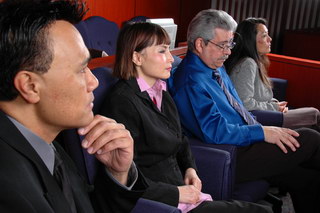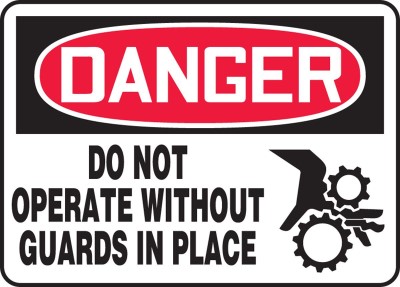
Human Factors: Weakest Argument of a Potent Strategy?
On the Scene E-Newsletter, Edition 115, May 18, 2010
 In product liability cases, the focus is whether an identified hazard caused an injury, and whether that hazard could have been designed out of the product or guarded against. For expert opinions in this area, engineers or scientists are called upon to review the design, and evaluate the methods of safeguarding against hazards. Experts can eventually get up on the stand and talk about calculations for motion, force, or electrical current, and scientifically explain whether a product had a defect or not.
In product liability cases, the focus is whether an identified hazard caused an injury, and whether that hazard could have been designed out of the product or guarded against. For expert opinions in this area, engineers or scientists are called upon to review the design, and evaluate the methods of safeguarding against hazards. Experts can eventually get up on the stand and talk about calculations for motion, force, or electrical current, and scientifically explain whether a product had a defect or not.
If a hazard could not be designed out or safeguarded against, the next option is to protect the user by training or warnings. Many products rely on User Manuals and on-product warnings to train about what hazards exist and how to avoid them. Experts with the appropriate education and experience can evaluate warnings based on standards and research that has been performed and offer opinions whether the warnings were suitable.
Even if it can be proven that a product was safe under normal conditions of use, another area of exploration is whether the product was safe under conditions of foreseeable misuse. Understanding these issues often requires an understanding of human factors.
Human factors is the study of the design of products, facilities and situations with consideration of human capabilities and behavior. Studies show that between 70-90 percent of all accidents are blamed on human error. These findings are misleading because the statistic does not tell whether the accident was caused by a normal or predictable response from the human interacting with the product. In some instances, the real source of error can be found in the design of the product rather than the person using the product.
For example, imagine a microwave oven where there is no switch on the door. You swing the door shut, but it doesn’t quite latch and when you hit the start button, you get bombarded with microwaves. In addition, there were no labels on the oven warning you to make sure the door was closed. From only a mechanical or electrical design perspective, if the door was closed, the microwave was safe. But recognizing that a user may occasionally leave the door unlatched, an oven without a door switch is clearly defective.
Human factors can be perceived as a weak argument but also as the most potent. Human factors experts examine normal vs. abnormal human performance and behavior. It is easy enough to offer the opinion that a normal person might occasionally leave the door of the microwave unlatched. But how can an expert define “normal” in a way that will stand up in court? Engineering experts are expected to have opinions based upon mathematics and science and fortunately there are scientific methods for quantifying normal behavior. CED engineers start by reviewing all applicable standards that apply to the product and verify conformance. If no standards exist, user studies can be performed to test performance or behavior, and statistics can be employed to help convince a jury what they should consider to be normal performance or behavior.
Human factors can be a powerful argument because juries will be sympathetic to a plaintiff if they could see themselves or someone important to them doing something similar. This is why it is important to have human factors experts with the advanced training and experience in the field. CED has been working in areas such as human factors and many other disciplines for over 24 years and could be a powerful asset to your case or claim.






